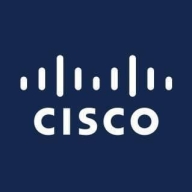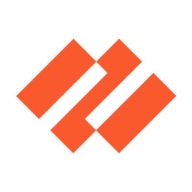

Palo Alto Networks Advanced Threat Prevention and Cisco Secure IPS (NGIPS) compete in the cybersecurity sector focusing on intrusion detection and prevention. Based on the feature set, Palo Alto seems to have the upper hand with user-friendly interfaces and strong threat detection capabilities.
Features: Palo Alto Networks Advanced Threat Prevention offers next-gen firewall capabilities, content filtering, and advanced threat prevention. The WildFire sandboxing and machine learning for threat detection are notable. Cisco Secure IPS (NGIPS) features strong intrusion detection and prevention, with valuable integrations like Talos for intelligence sharing and anomaly detection, noted for flexibility and scalability.
Room for Improvement: Palo Alto Networks could improve its integration with email filtering, licensing setup, and support documentation. Resource consumption and initial setup complexity are other concerns. Cisco Secure IPS (NGIPS) needs enhancements in ease of configuration, GUI design, and reduction of false positives. It is costly, with licenses needed for full functionality, and could enhance machine learning capabilities.
Ease of Deployment and Customer Service: Palo Alto Networks is available in on-premises and public cloud environments, known for its flexible deployment despite configuration complexities. Its support is rated favorably, with suggested improvements in communication. Cisco Secure IPS (NGIPS) is mainly used in on-premises and hybrid cloud setups; it is stable, with reliable support, although faster technical assistance is desired.
Pricing and ROI: Palo Alto Networks is regarded as expensive, challenging for smaller organizations. Users acknowledge its strong security features as a worthwhile investment. Cisco Secure IPS (NGIPS) is also expensive, with significant licensing fees. Users find value in its security capabilities, providing reliable performance, though cost is a concern when evaluating against security needs.
It offers insights into security threats, despite the inability to quantify its impact in numbers.
A few years ago, I had a very bad situation. We lost a lot of money, and I opened for the first time in my life, a case with priority one. The person responsible for the ticket didn't respond for two days.
Fortinet, on the other hand, offers quicker response times and same-day RMAs, which gives them an edge in customer service.
The response was fast, and they provided experts to solve our issues quickly.
Overall, I find the technical support from Palo Alto Networks quite good, although getting a hold of the TAC can be challenging and sometimes requires long phone calls.
I have proof of this rating - when I escalate a case, I receive a reply from TAC support after two days.
I rate technical support from Palo Alto as eight out of ten.
Palo Alto Networks Advanced Threat Prevention is scalable and works well wherever enforcement points exist.
The software situation with Cisco is problematic.
Proper sizing of the firewall models ensures that the system does not experience crippling performance issues.
CLI is very important in professional working, and it was an unwise decision by Cisco to remove it.
Incorporating AI capabilities would enhance its functionality.
Palo Alto needs to focus on how to bring that technology to end users and how easy it is to use, especially in a hybrid environment where users work from various locations.
The behavioral detection capabilities could be expanded to address all threats at the perimeter, reducing the reliance on endpoint detection and response systems.
It's cheaper to integrate with existing IT security solutions compared to other expensive brands with subscription costs.
Palo Alto Networks Advanced Threat Prevention requires an add-on license and is considered expensive compared to competitors like Cisco AMP and FortiGate firewalls.
Cisco Secure IPS (NGIPS) is quite powerful for threat detection and includes botnet detection.
They can discover new versions of malware, which is very beneficial.
As traditional signature-based mechanisms become less effective due to the evolving nature of attacks, this solution's focus on behavioral analysis is crucial.
We are satisfied with the analytic capabilities of Palo Alto Networks Advanced Threat Prevention, especially the reporting features available in the Palo Alto portal in terms of their application visibility interface, which is very good for us to get visibility on all critical applications and the associated users, as well as the risks associated with every category of traffic.
| Product | Market Share (%) |
|---|---|
| Palo Alto Networks Advanced Threat Prevention | 5.6% |
| Cisco Secure IPS (NGIPS) | 3.5% |
| Other | 90.9% |

| Company Size | Count |
|---|---|
| Small Business | 27 |
| Midsize Enterprise | 17 |
| Large Enterprise | 26 |
| Company Size | Count |
|---|---|
| Small Business | 9 |
| Midsize Enterprise | 4 |
| Large Enterprise | 14 |
Cisco Secure IPS (NGIPS) provides intrusion prevention, malware detection, and DDoS protection with modularity, third-party integration, and cloud capabilities, focusing on flexibility, automation, and real-time threat detection, while offering centralized management and ease of upgrading.
Cisco Secure IPS (NGIPS) is designed to support network security through an open platform, delivering features such as anomaly detection and security intelligence. Users benefit from robust technical support, making it a reliable choice for enterprises seeking to protect their network infrastructures. However, improvements are needed in user-friendliness, interface complexity, and integration with third-party tools. There is a demand for better reporting, sandboxing capabilities, and enhanced AI-driven threat detection and response times, especially for zero-day attacks. Pricing remains a concern due to high costs and licensing complexity.
What are the key features of Cisco Secure IPS?Businesses deploy Cisco Secure IPS (NGIPS) in both on-premises and cloud environments, addressing needs like compliance audits and integration with platforms such as Cisco Talos and Umbrella. Its implementation strengthens perimeter security, enhances cybersecurity in enterprise and banking sectors, and ensures effective threat management for network defense.
Palo Alto Networks Advanced Threat Prevention is a cloud-based security service that combines cutting-edge technologies, including machine learning, artificial intelligence, and expert human monitoring, to effectively thwart advanced threats like malware, zero-day attacks, and command-and-control threats. It offers inline protection, scrutinizing all network traffic irrespective of port, protocol, or encryption. An integral component of Palo Alto Networks' security platform, it enjoys widespread adoption across diverse organizations. With its robust security capabilities, it's an ideal choice for entities of all sizes, particularly those in high-risk sectors such as finance, healthcare, and government agencies, seeking to safeguard their networks from a broad spectrum of advanced threats.
We monitor all Intrusion Detection and Prevention Software (IDPS) reviews to prevent fraudulent reviews and keep review quality high. We do not post reviews by company employees or direct competitors. We validate each review for authenticity via cross-reference with LinkedIn, and personal follow-up with the reviewer when necessary.